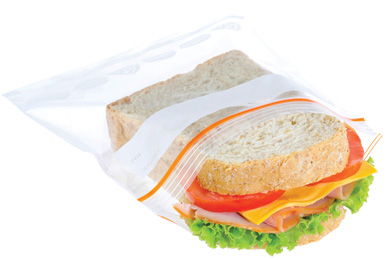
There’s a great future in plastics.
That might’ve been true in 1967, but Sarah Kaeck, CAS/BA ’97, has graduated to something more sustainable.
The Vermonter is the founder and CEO of Bee’s Wrap, a washable, reusable, and compostable alternative to plastic wrap—enough of which is used by Americans each year to cover the Lone Star State like a Tex-Mex casserole.
Kaeck gave rise to the idea eight years ago, when she began searching for an Earth-friendly way to store homemade bread. “Caring for the environment and reducing waste have always been important to me,” says the mother of three. “But I quickly discovered it was really hard to avoid single-use plastic.”
According to Plastic Wars—the Frontline documentary coproduced by SOC’s Investigative Reporting Workshop, which debuted on PBS this spring—when Americans see the iconic “chasing arrows” symbol on a plastic storage container they believe it’s recyclable. But the truth is, the majority of plastic can’t or won’t be recycled, as it’s simply not economical.
That’s why Kaeck set out to create a reusable storage solution. The formula she cooked up in her kitchen—coating a thin strip of organic cotton with bee’s wax, jojoba oil, and tree resin—is the same one that’s sold online and in 3,000 stores today. The pliable wrap, which is sealed by the warmth of your hands, can last up to a year. After its stickiness has been sapped, the all-natural wrap can be composted or used as a fire starter.
Ziploc bags have been lunchbox and leftover staples since they debuted 50 years ago—but scientists estimate it could take eight times as long for them to break down in landfills. Kaeck says swapping Bee’s Wrap for one plastic sandwich bag will divert 200 of them from the dump or the ocean each year.
By minding her beeswax, this eco-entrepreneur demonstrates that “even small changes can make a big difference for the health of our families and our planet.”
Hard To Swallow: Here’s Why It’s Time To Bag The Plastic Sandwich Bag.
- Plastic sandwich bags—along with those that hold our bread, dry cleaning, newspapers, groceries, and more—aren’t accepted incurbside recycling bins.
- Their thin film can clog the equipment at material recovery facilities, bringing operations to a grinding halt.
- These bags are only recyclable at grocery stores and other retailers. There are 18,000 drop-off locations in the US; visit plasticfilmrecycling.org to find the one nearest you.
- More than 40 percent of plastic is used just once, then tossed.
- When it’s recycled, plastic film can be used to make composite lumber for decks, benches, and playground equipment.
- But most of the time, it ends up in the trash. Of the 4.8 million tons of plastic film produced each year, 90.9 percent ends up in the dump—or the ocean.
- More than 5 trillion pieces of plastic are floating in the ocean, according to National Geographic.
- If something doesn’t change, the magazine reports that virtually every seabird species will be eating plastic by 2050.